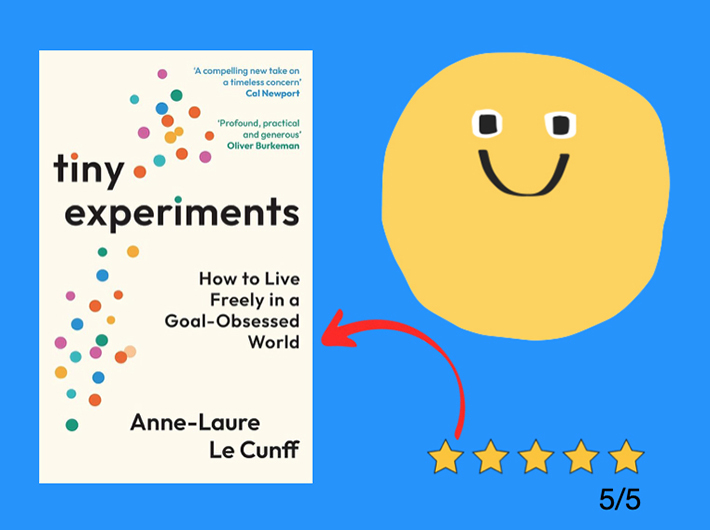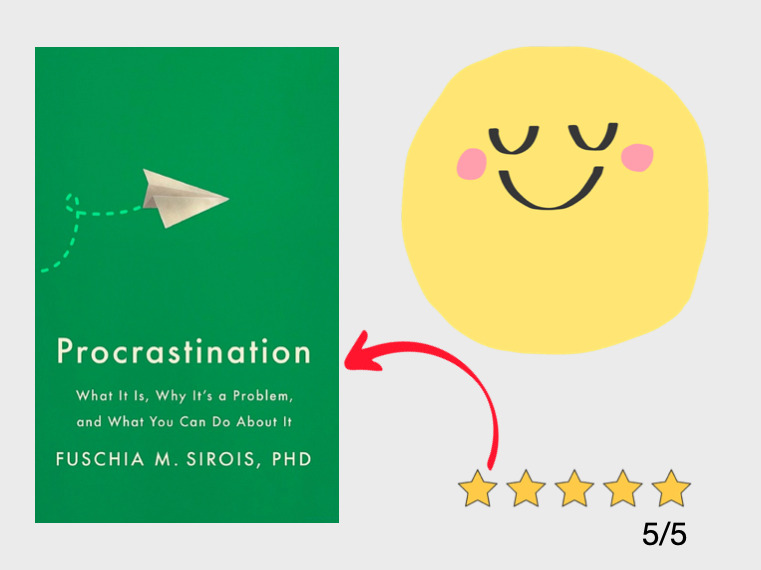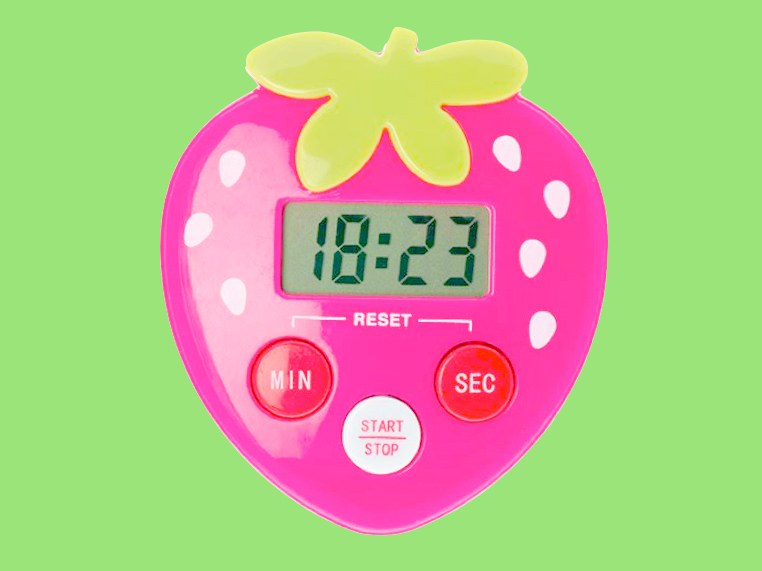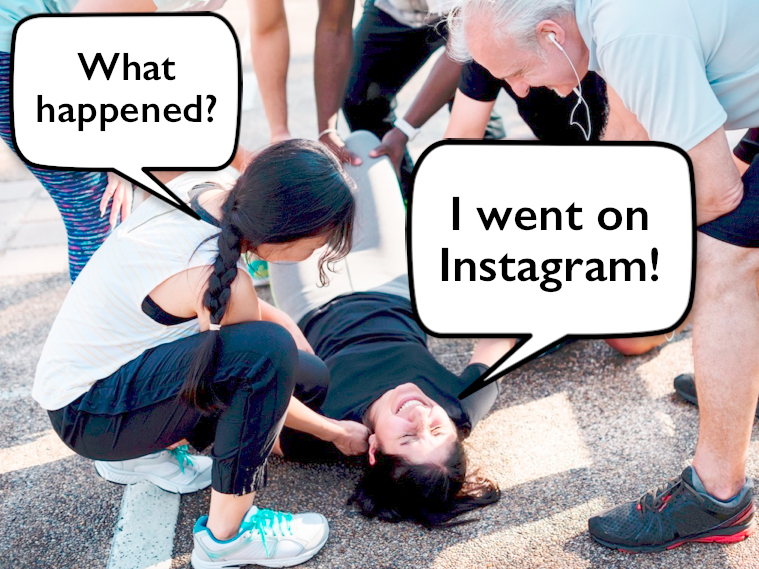
I was the kid who was always late for school. I’d forget things. I’d lose my stuff. I’d regularly have to check the grimy lost property bin.
When I was younger, I admired people who were organised. Seeing someone with colour-coded files, a neatly arranged bag, and a tidy bedroom was inspiring.
I figured I was just wired differently. Being messy was just how I was—a simple fact of life. My boyfriend (now my husband) even affectionately nicknamed me Mess Pot.
It never dawned on me that perhaps these ‘organised’ people I was so in awe of had been exposed to other organised people and practices from a young age.
It wasn’t until I was in my early twenties that the penny finally dropped.
Here’s what I realised . . .
No one pops out of the womb knowing how to be organised.
If you know how to learn, you can learn how to become organised. It’s not rocket science.
So, that’s exactly what I did.
Over the past 15 years, I’ve taught myself to be organised.
I’ve read many books on the topic, from Marie Kondo’s bestseller The Life Changing Magic of Tidying Up to David Allen’s Getting Things Done.

I’ve experimented with numerous organisational methods, systems and strategies that the authors promised would transform my life from chaos to freedom, control, and ease.
In this article, I share what I’ve learnt from all these books, organisational gurus, and personal experiments I’ve conducted to become organised. I hope this inspires you to develop your own systems and strategies that work for you.
You can follow other people’s systems and methods, but I’ve discovered that it’s best to develop your own organisational system. The organisational system you adopt must align with your values and goals. If it doesn’t, abandon it or tweak it until it feels right for you.
For instance, I love books, and I own many. This is why I yelped out in pain when I read Marie Kondo’s advice on how to deal with books.
In her book The Life Changing Magic of Tidying Up, Kondo advises readers to rip out relevant pages from reference books and discard the rest of the book. There was simply no way I would do that to my precious books!
Central to her KonMari method is holding an object in both hands and feeling the emotion that arises.
If the object sparks joy? You keep it.
If there is no joy? You get rid of it.
I can see how this strategy has enormous appeal. It simplifies the decluttering process. You don’t have to think too hard. But there are dangers in the spark joy approach.
You can end up on a consumer treadmill of discarding items that no longer spark joy and constantly acquiring new ones that do. However, you can bet that the joy will soon dissipate from those new items as you habituate to them.
In addition, this ‘Spark Joy’ strategy also overlooks the functional role of many items in our lives.
My toilet plunger doesn’t exactly spark joy, but it’s incredibly useful when I need it!
The point is you need to trust yourself. Don’t give all your power away to a stylish organisational guru with a cult following and a Netflix series!
Trial and error is the key to getting your organisational groove on. And patience.
Your life won’t be transformed in a day or a week. You have to trust that the solutions will come, but it will take time.
This may sound a bit woo-woo and new age. So, let me frame it another way . . .
On your journey to become organised, pretend to be a scientist. Run some personal experiments.

In the book Tiny Experiments, Anne-Laure Le Cunff encourages us to come up with a research question and then turn it into a hypothesis. She states:
“Don’t overthink it. Formulating a hypothesis is an intuitive process based on your past experiences and present inclinations. It should simply be an idea you want to put to the test- an inkling of an answer to your research question.
If you observed that you dread giving presentations, maybe improv classes could help build your confidence. If you feel anxious in the morning, maybe meditation could help regulate your emotions. If you enjoy graphic design, maybe freelancing could help strengthen your portfolio.”
Don’t be put off by this scientific language (e.g., ‘Hypothesis’ and ‘research question’). Running a tiny experiment and formulating a hypothesis is easy.
Here’s an example from my own life . . .
I’ve noticed that when clutter piles up on my desk, I am more easily distracted and feel overwhelmed. So, I came up with the following research question:
“How can I decrease feelings of overwhelm and increase my ability to focus at my desk?”
My hypothesis to this question was:
“Decluttering my desk by removing all non-essential items out of my field of vision will decrease feelings of overwhelm and increase my ability to focus on the task at hand.”
Then, I put this idea to the test and observed what happened.
Some experiments you run will work. Others will flop, but that’s okay. The point is you won’t know unless you run some tiny experiments.
As Anne-Laure Le Cunff states:
“Once you have a hypothesis, you can design an experiment and turn your life into a giant laboratory for self-discovery.”
Through running tiny experiments, I’ve come to realise that being organised isn’t about having a beautifully colour-coordinated filing system or a nicely decorated home.
It’s also not about following 10 simple steps and waking up one day to find that you’ve magically become an organised person.
In our materialistic culture, we are sold a particular idea and image of what it means to be organised. But I’m not buying it. And you shouldn’t either. Why? Because it’s a lie designed to make us feel bad about ourselves, so we buy more stuff!
In stark contrast to the slick images you see online and in glossy magazines, life is messy. It’s a constant struggle.
Purchasing pretty storage containers and having a tidy, organised home won’t make your life less messy and uncertain.
But I can say this: being organised will make it easier to navigate the mess and chaos of life. It will help you focus your time, energy, and attention on what matters most to you.
So, I’m suggesting that you block the influencers and ads from your feed and burn the home lifestyle magazines. You’re going to create your own personal philosophy for organised living.

Being organised is about helping my day go a little more smoothly.
It’s about removing friction and resistance between me and the tasks I need to do. When I’m organised I can easily find what I need, which allows me to dive into my projects: filming that video, cooking that new recipe for dinner, and mind mapping that book I’ve just read.
Being organised is a way to enjoy the present moment more. Instead of feeling overwhelmed by mess and clutter, I feel calm and grounded. It’s easier to focus on the task at hand.
Is it worth taking the time to become more organised and experiment with your own systems and strategies?
Yes. 100%.
Being organised has decreased my stress levels and boosted my confidence. It has also saved me a significant amount of time and energy.
I’ve found that developing a few guiding principles helps ground you in your quest to become organised.
Below, I share my guiding principles and how I’ve integrated each one into my life.
I’m not here to tell you to copy what I do (it’s best to develop your own philosophy, guiding principles, systems, and strategies). However, if you’re unsure where to start, feel free to experiment with the systems and strategies listed below.
Give every item a home. Everything should have a special place in your space.
Professional chefs do this. Before they start cooking a dish, they prepare the ingredients and take out the kitchen utensils they need. There’s a term for this practice. It’s called the mise en place.

Mise en place is a French term that literally translates to ‘putting in place’, but it means a place for everything and everything in its place.
When it comes time for a chef to start cooking a dish, they know where the ingredients and kitchen utensils are. This allows the chef to work efficiently and focus on the task at hand: cooking the dish.
In the book ‘Work Clean’, Dan Charnas explains how this concept can be applied outside the kitchen to our everyday lives.
Charnas encourages us to arrange our spaces to remove resistance. He states:
“The less friction we have in our work, the easier it is to do, the more we can do, and the quicker we can do it; and this the more physical and mental energies we can preserve for other things.”
Mise en place changed my life for the better. I used to spend a lot of physical and mental energy trying to find my keys, wallet, etc., but not anymore.
I now have a designated spot for my keys, hat, wallet, and bag. After using these items, I return them to their special place.
With the mise en place, I no longer waste time searching for items. I can quickly and easily find what I need.
If something is important, I can’t have it stuffed away in a cupboard, drawer, or file. If it’s hidden away, it doesn’t exist.
This is why you’ll see vertical wall hangers in most rooms of my house. These hangers contain key items I frequently use in the space.
By having one item per pouch, I can easily find what I need when I need it.
I get easily overwhelmed by piles of stuff, so I have to be vigilant and stay on top of the mess.
I have a simple trick for keeping my space relatively tidy. I tell myself, “All I need to do is put away three things. That’s it!”
The sink is overflowing with dishes? I tell myself, “Just do three dishes!”
Laundry is scattered all over the bed? “Just put away three pieces of clothing!”
The kitchen bench is covered in random stuff? “Put away three spices!”
Putting away three items feels easy. And when something feels easy, I’m more likely to get started.
When everything has its special place (see principle #1 – mise en place), it’s easy to implement this principle.
There’s nothing more frustrating than having a brilliant idea and having no way to capture it. You need to be able to catch thoughts as they occur.
This is why I have whiteboards, markers, pads of paper, and pens placed in key locations.
These random ideas get thrown into my in-tray to process later on.
Distractions keep you from doing what you need to do. Like a pile of clutter on your desk or boxes obstructing your entryway, distractions are a barrier to your goals and intentions.
If you want to be more organised, you need to deal with anything that could distract you before sitting down to do your work.
Like most people, the biggest distraction I face is my phone.
If I’m constantly checking my phone, I feel scattered, frenzied, and overwhelmed. Everything speeds up. I start to feel like I’m spinning out of control.
I know I have to avoid this mental state at all costs if I want to have any chance of having a productive, enjoyable day.
This is why I have a morning ritual of placing my phone in pocket 1 of my vertical wall hanger in my dining room (well away from my workspace) before I start my workday. Out of sight is out of mind.

I used to feel intimidated by the idea of planning, so I rarely planned my week or day.
But over the past few years, I’ve become a planning machine. Why? Because plans are powerful. Even rubbish plans are powerful.
As Ned Brockman says, plans “help make you less anxious about the howling chaos of modern life.”
Here’s how I create my ‘rubbish’ plans for the week and day:
At the end of every week (on a Sunday), I create a plan for the week ahead.
I do this by reflecting on the week I’ve just had (What did I do this week? Can I claim any wins? Are there any unfinished tasks or people I need to get back to?) and looking at the week ahead (What do I need to do this week?).
I write out all the major to-dos for the next seven days on a list.
This list usually overwhelms me (there’s always a lot to do!). To combat overwhelm, I transfer a few tasks from the list to an index card. This is my daily card (the to-do list for today).
As I complete each task, I mark it off my daily card. As I see more items being marked off, it builds positive momentum and a sense of progress and satisfaction.
I use a paper-based planner and a massive year-in-a-glance calendar to help me keep track of my commitments.

When I can see how many days I have before an important presentation or my next holiday, I feel calmer and more in control.
Using planners also frees up precious mental space for learning as you’re not trying to hold so much information in your working memory.
I’m far from being a minimalist. I love my stuff. But having too much can be overwhelming. More stuff means more things to manage, making it harder to stay organised.
As someone who loves to op-shop, I frequently have to remind myself of the following quote by William Morriss:
“Have nothing in your house which you do not know to be useful or believe to be beautiful.”
Every few months, I’ll collect some items to donate to my local op-shop. Reducing my possessions makes cleaning and organising a lot easier and quicker.
It’s important to remember why you are striving to be organised in the first place. It’s not to impress other people. You are doing this for you.
Being organised helps you pursue your goals and live in accordance with your values. You have to keep your goals front and centre of your mind; otherwise, the goal of being organised can dominate your life. Organising can become a form of procrastination.
This is why I keep coming back to my values and goals (which I have captured on a mind map). This reminds me that being organised helps me to live a good life. But it’s not the point of my life. There are more important things I want to do with my time, energy and attention.
That said, it’s hard to focus on and work towards my goals if I’m completely disorganised. I lose sight of them! You need to find a healthy balance.
If you want to be more organised, I encourage you to experiment with developing systems and strategies that work for you. Come up with an organisational philosophy and set of guiding principles that align with your values.
Why not treat your life as a laboratory and run some tiny experiments to become organised?
Through trial and error, you’ll discover what works and what doesn’t.
Remember, this isn’t about having a perfectly decorated home or trying to impress others. The point of being organised is to allow you to do the things you want to do without as much friction.
Share This:
Procrastination feels heavy.
But what if we could turn combating procrastination into a fun game?
Lately, when I catch myself avoiding a task, I’ll play a little game to see if I can get myself to move in the right direction.
I’ve discovered that it’s best to approach any task with a curious and playful mindset. If you take yourself too seriously, all the joy and fun can get stripped from the process.
Often, when I play this game, I surprise myself because the strategy works! I’ll be off and running with a task I procrastinated on for days.
But sometimes a strategy won’t work. That’s okay. When this happens, I usually take a little break before trying another approach.
I don’t claim to be a grandmaster at playing the game of combating procrastination. But these days, I can catch myself when procrastinating, notice the warning signs, and get moving in the right direction.
In this blog, I share how you can combat procrastination in a fun and playful way to fulfil your intentions and accomplish your goals.
Are you ready to play?
Let’s begin!
If you want to play this game of combating procrastination, you first need to understand what procrastination is and the rules of the game.
I recommend you play this game on your own so you’re not competing against anyone else. There’s no first or second place, no runners-up, and no one wins a trophy.
You can play with others, but it’s a collaborative game where you cheer each other on and gently coach each other into action.
It’s also a game that never ends because the work never ends. You are constantly learning and growing.
In her book ‘Procrastination: What it is, why it’s a problem and what you can do about it’ Dr Fuschia Sirois defines procrastination as:
“ . . . a common self regulation problem involving the unnecessary and voluntary delay in the start or completion of important intended tasks despite the recognition that this delay may have negative consequences.”

In other words, procrastination is:
Delaying a task + you know you are causing your Future Self pain and suffering.
There are some simple rules you need to understand to combat procrastination. Once you cement these rules in your brain, life becomes easier. Instead of experiencing constant resistance, you discover ease and flow.
Difficult work tends to bring up unpleasant emotions, such as boredom, stress, anxiety, fear, and frustration.
Most of us don’t like experiencing these feelings, so to repair our mood, we procrastinate. We avoid work and engage in easier, more fun tasks (e.g., scrolling through social media).
At the heart of combating procrastination is allowing yourself to sit with unpleasant feelings and push past them. Resist the urge to run to your devices. If you can do this, that’s 80% of the battle.
Pushing through the discomfort and making a start is a significant milestone worth celebrating.
Often, we wait for the perfect time to start a task. But it’s an illusion that there is a perfect time.
The perfect time is right now, amid the messiness and chaos of life.
“But I’m not feeling motivated!” I hear you say.
That’s okay. Make a start regardless of how you feel because here’s the part most people don’t understand:
Motivation follows action
In other words, you have to get moving for motivation to show up.
There are many great strategies and tools that can help you get started with a task, even when your motivation levels are low.
Once you have a selection of strategies and tools and you’ve practised using them a few times, you will feel more confident in your ability to combat procrastination.
Here are a few of my favourite strategies and tools for getting started with my work:
Fear is a significant driver of procrastination: fear that you won’t be able to do it, fear of failure, and fear of the unknown.
When you move your body, you decrease fear and anxiety. Movement can also help to calm and focus your mind and boost positive emotions.
This is why I start my day with a 20-30 minute run on my treadmill. It bathes my brain in feel-good chemicals, makes me feel stronger, and prepares me for the challenging work I’m about to face.
When a task feels big and overwhelming, it’s easy to procrastinate. But can you do 10 minutes on the task?
When I set a timer for 10 minutes, my brain thinks, “I can do 10 minutes. Easy!”
My brain then knows the task (and the unpleasant feelings) won’t last forever. The worst-case scenario is I experience 10 minutes of mild to moderate discomfort. When the timer goes off, I have a way out. I can do something else.
But what usually happens is after 10 minutes, I realise the task isn’t as bad as I thought it would be. The motivation has kicked in, and I’m on a roll.
When struggling to write my PhD, I attended a workshop led by an academic coach. She encouraged me to “Write crap” (her words, not mine).
This helped me to get over the perfection hump and make a start.
Most (if not all) great works started as rough drafts. The problem is we don’t see those rough early versions. We only see the polished final product. This messes with our minds and can lead to perfectionist tendencies kicking in.
Embrace the first messy draft. Celebrate it! You have to do it to get to the good stuff.
In the book ‘Everything in its Place’, Dan Charnas recommends the ‘Slow-but-don’t-stop’ technique for doing things you don’t want to do.
Here’s how it works:
If you’re feeling resistance towards a task, start doing it, but move very slowly. Breathe into the discomfort. Take your time.
Charnas writes that as you use this technique:
“You’ll still hate it [the task] but your task has become a moving meditation or like a game.”
For example, I used this strategy on the weekend to sort my laundry. The first step was to pick up the basket full of clothes and place it on my bed. Then, I picked up one item at a time and put them into piles (e.g., socks, activewear, and undies). I then selected a pile of items (socks) and dealt with one item at a time.
I’d usually rush to fold my clothes and feel slightly annoyed by the whole process (“Ugh, what a chore!”), but this time, it felt different. It felt like a meditation. I felt calm and grounded as I folded my socks.
The beauty of this technique is that the work will still get done, but as Charnas points out, you don’t give up control. You still have forward momentum.
As the Mexican proverb goes:
“An ant on the move does more than a dozing ox.”
Are there things in your workspace that distract you? Is there anything that reminds you of more fun stuff you could be doing (e.g., a video game console or your phone)?
Please get rid of those things or make them harder to access.
My phone is my biggest distraction. This is why I keep it away from my body in another room whenever I need to do focused work.
I’m currently experimenting with Mel Robbin’s 5-Second Rule. The 5-Second Rule is simple:
The moment you have the instinct to do a task before your brain can come up with an excuse not to do it, you count backwards ‘5 . . . 4 . . . 3 . . . 2 . . . 1!’ and you do it.
In her book ‘The 5 Second Rule’ Robbins explains the psychology underpinning the strategy. She writes:
“The counting distracts you from your excuses and focuses your mind on moving in a new direction. When you physically move instead of stopping to think, your physiology changes and your mind falls in line . . . the Rule is (in the language of habit research) a “starting ritual” that activates the prefrontal cortex, helping to change your behavior.”
The ultimate way to combat procrastination is to create a habit or a ritual. You need something that signals to your brain it’s time to engage in a particular behaviour.
With habits, you don’t have to stop and think, “What do I need to do now?”. Habits are automatic. Your brain knows exactly what it needs to do, and you do it.
For example, I have a habit of running on my treadmill before I launch into my day. My brain knows that after I put on my gym clothes and shoes, I turn on my treadmill and hit the speed button to start my warm-up.
I carry these behaviours out even when I’m not in the mood to run. That’s the power of habits.
Then, I suggest you cut yourself some slack.
Forgive yourself for procrastinating, pick a strategy, and get moving.
Most of us don’t do this, though.
We bag ourselves out in an attempt to motivate ourselves. The problem is this rarely works.
Dr Sirois says that intense self-criticism leads to negative thoughts, which lead to negative feelings. We end up feeling demotivated, which causes us to procrastinate even more!
You can stop the vicious cycle of procrastination by practising being kind to yourself.
If you follow these simple rules and be playful with experimenting with these strategies, you can get a better handle on procrastination.
Like anything in life, the key is practice. The more you practice allowing yourself to feel the unpleasant emotions instead of running from them, the better you’ll do. The more times you practice a strategy, the more natural it will feel and the sooner it will become a habit.
One foot in front of the other. You can do this.

When my competitive instincts kick in, I feel like a desperado. It’s an old feeling from childhood where I feel like I’m constantly falling short (not good enough or smart enough).
Over the past few years, I’ve trained myself to focus on running my own race. I’ve had to learn to do things my way. As it turns out, when you live this way you feel better about yourself and less anxious too.
When I was 17 years old, I was struggling to figure out what I wanted to do with my life (“Should I be at Law school? Should I quit and get a job?”).
To keep depression at bay, I forced myself to exercise in the park every Sunday.
That’s where I met a wise woman who happened to be a family lawyer.
Over the course of a year, we became friends exercising in the park. I confided in her that I was struggling at university.
“I’m not sure if Law school is the place for me”, I said.
I also mentioned to her that I had failed my first test but I stopped short of telling her my mark (only 5%).
It must have been obvious that I was in need of a bit of a confidence boost because the following Sunday she rocked up to the park with an old record in her hand.

The track was called I’ve gotta be me.
She said “This is for you. Listen to it when you get a chance”.
Back in those days, there was no Spotify or music streaming services. In order to listen to this record, I had to go to Cash Converters (a secondhand pawn shop) and purchase a clunky stereo system with a record player.
I listened to the song hoping to have some earth shattering realisation about what to do with my life. And when it never came, I listened to it again and again. Still nothing.
“What is she trying to say to me with this song?” I cried.

Looking back, it’s so obvious what she was trying to say (“Be yourself! Follow your dreams! Don’t give up!”).
The problem was I was treating listening to this song like it was an assignment to analyse a poem or a piece of abstract art. I was overthinking it.
Looking back, it didn’t matter that I didn’t fully understand the lyrics. I was really touched by this lawyer’s kind gesture.
Law school felt like such a cold and competitive place at times. Coming from a working class family, it was easy to feel like you were invisible and didn’t belong there.
Yet here was this woman (a successful family lawyer) encouraging me to be myself and keep going. That meant a lot to me.
Two decades later as I listen to the track, I get it.
It’s powerful to live life on your own terms.
What they don’t teach you in school is it’s far more rewarding to collaborate and cooperate and forge your own path forward in life than it is to compete against others and follow the herd.
It’s also a lot more fun and energising to run your own race and focus on your own progress.
It’s possible to run your own race, even if you have shaky confidence. In fact, running your own race will help you to build rock solid confidence. So the sooner you learn to do this, the better.
Here’s how you do it . . .
Instead of competing and comparing yourself against your friends or some other poor soul in your class or workplace, start competing against yourself. Compare you to you.

A simple habit you can develop is tracking your wins each day in a notebook. I do this just before going to bed (my notebook is on my bedside table).
This simple practice helps build momentum. As Dr Benjamin Hardy says “[When you cultivate this habit] you feel like you’re always winning and making progress.”
If you write down three wins every day, by the end of the week you’ll have 21 wins down on paper. If you keep this practice up and look back over your entries, something shifts. Instead of feeling like a desperado, you’ll be feeling like a champion.

If you must have some opponent to compete against, make your opponent an electronic timer. Challenge yourself to compete against the timer.
“Can I empty this laundry basket (putting away my clothes) in under 5 minutes?”
“Can I vacuum the house in under 12 minutes?”
“How many words can I get down on the page in 25 minutes? Let’s go!”
When I’m lacking motivation, this is one way I get moving with various tasks. Timers can also help you stay focused on a task for a period of time and time your rest breaks.

Another way you can challenge yourself is with music. You can create a 25 minute or hour long playlist and use it to time your work sessions. If it’s a small task you need to complete (under 5 minutes), use an upbeat song to help you get it done.
In The Ultimate Time Management Toolkit Risa Williams recommends selecting songs with no lyrics and that don’t have any sad emotions associated with them. When it comes to your schoolwork, try to keep the music light and upbeat without being overly distracting.
The biggest mistake people can make when it comes to achieving their goals and creating new habits is to push themselves too hard.
I’ve been sitting at this computer for over an hour and I’ve ignored the last two timers that have gone off. Why? Because I’m in a flow state. When I started writing this blog, it was slow and painful. But now the ideas are flowing and I’m into it.
But I know I need to stop soon. If I don’t, I’m going to fry my brain.
As Greg McKeown says:
“You’re trying make sure that you don’t use up more mental energy than you can recuperate each day and each week. You want to be able to sustain the pace and get the job done. This is in contrast to being intermittent in your effort when you go big for a couple of days and then you can’t even work on it after that because you fried your brain, and you can’t get back to it.”
In a nutshell, think of this race you’re running as being a marathon (not a 100 metre sprint). Pace yourself.
Spending too much time on social media or following the wrong people online is the equivalent of pulling a hamstring when you’re out running your own race. It will mess with your mind and take you off course.

One of the problems with social media is it is designed to have you engage in upward comparisons. It puts you in a state of mind where you are constantly seeking approval from others.
Instead of focusing on what you need to do to move forward with your goals, you’re wasting time and energy following what others are doing. You get pulled into the outrage machine. Very quickly you can lose sight of your goals.
When you spend too much time on social media, your perception of reality also gets warped. Being exposed to envy inducing perfect pictures and posting only the best parts of our lives can make us forget that life is indeed very messy! In the book Disconnect Jordan Guiao explains:
“It is travel without the sixteen-hour flight, the fit body without the six-days a week workout regime and birthday parties without the crying babies. These approximations of reality start to become our new normal. As we edit out the messiness and ugliness of real life, we begin to forget that this messiness and ugliness exists for others too.”
Guiao recommends asking yourself whether the people you are following add value to your life. He says:
“Periodically reassess who you follow on social media and why. Is an influencer offering valuable advice and insights or just posting pretty pictures that make you feel bad about yourself? Do you think about their content when you’re offline? Does it serve you to comment on others’ posts if you are only doing it to seek their approval? What are you gaining from these interactions – and what are you losing?”
When you decide to ditch the pretty pictures and unfollow the influencers, you’ll notice a dramatic shift in how you feel about yourself and how you’re tracking in life.
If you’re like me, competing against others will leave you feeling desperate, insecure, and chaotic. So, why not start playing your own game?
Stay true to yourself. Do it your way. Set your own rules and path.
Using a timer or a song can be a simple way to get moving with a task. Reducing time spent on social media will help you to stay focused on what you truly want without getting distracted by all the noise and drama that’s playing out online.
I had one of these dreams the other night.
My anxious exam dreams usually go something like this . . .
I’m back in high school and I’m not having a fun time.
I’m freaking out because I haven’t studied for an exam (and this exam is in just a few hours). So I’m scrambling. I’m cramming.
But it’s not working. I’m looking at the page and nothing is going into my brain. I’m filled with this sense of impending doom. But just before I enter the exam room, I wake up.
It was just a dream.
Why am I still having dreams about high school exams?
I graduated from high school nearly two decades ago!
These dreams usually occur a few weeks before I need to deliver an important presentation. I’m not big on interpreting dreams but here’s what I believe my subconscious is trying to tell me . . .
Lift your game. Stop slacking off. Start preparing.
Both activities require you to exert mental effort and be well prepared. They can also bring up a lot of anxiety.
When I deliver a presentation, I have to recall a large amount of content from memory. I need to keep an eye on the time. I have to be organised and make sure I have all my props and equipment. I also need to stay calm because if I look stressed, this will make the audience feel stressed.
Just like you can’t wing a 3 hour long exam, I can’t wing a presentation in front of a group of 200 students.
The strategies that help me to memorise and deliver my talks can help you to perform well in your exams.
The strategies I share below help me to think clearly and quickly under pressure. They keep me calm and grounded in strange and unusual environments.
I realise some of the strategies below may seem a bit over-the-top. But my job is to present ideas to others. If I bomb out, I usually won’t get a second chance to present at the school again. So it’s really important that I apply myself and do my best every time.
When you leave things to the very last minute and feel rushed packing up your gear, there’s a good chance you’ll forget something important.
This is why I pack all my presentation gear (e.g. props, adapters and data projector) the night before. I also go as far as packing my own glass and bottle of water.
Just before I go to bed, I lay out the clothes I’m going to present in. This means I don’t have to waste my brainpower on this small stuff in the morning.
Just like you need to think quickly in an exam, I need to be able to think quickly on my feet when I present. Quality (uninterrupted) sleep helps me to do this.
If I mess with my sleep, I mess with my ability to think.
I have developed a strict bedtime routine – I go to bed at the same time and I wake up at the same time. My phone is on silent and charging in another room when I sleep.
Now is the time to develop good sleep habits. Aim to get 8 hours of quality sleep each night.
Consider doing some light exercise (nothing too strenuous) before an exam.
Whenever possible, I workout at the gym before I present. Not only does this make me feel powerful and strong, but it puts me in a positive frame of mind.
It’s a fine line though. If I do a gruelling workout, I’m going to exhaust myself. I need to make sure I don’t overdo it.
On the days when I do happen to push myself too hard, I’ll take a quick 20 minute power nap to re-energise before a talk.
If I’m feeling a bit nervous about delivering a presentation, I don’t make a big deal about it. I view a bit of nervous energy as a good thing. I think, “I must be excited”.
I’ve also come to see a bit of nervous energy as better than being completely chilled. If I’m too chilled, I can’t muster enough energy to inject into the room.
If you’re feeling nervous about an exam, say to yourself, “I’m feeling excited!”
When I arrive at a school to present, before I get out of my car, I’ll sit and breathe deeply for 2 – 3 minutes. This helps me feel calm and grounded.
I also put my phone on airplane mode so I’m not distracted by any random texts or calls.
Your brain needs fuel to think and function well. Where does it get that fuel from? Food. So whatever you do, don’t skip breakfast or lunch before an exam.
Before I present, I make myself a healthy smoothie. This gives me the energy I need to deliver high energy presentations.
I once cooked up and ate a big vegan schnitzel before I had to deliver an important keynote presentation at a graduation ceremony. This ‘schnitzel’ was packed full of salt and preservatives. I kept sipping on water throughout the whole ceremony. I was freaking out (“How am I going to do this? I need to go to the toilet!”)
Luckily, I managed to deliver the speech without any problems. But it was a close call.
I learnt an important lesson that night . . .
Don’t experiment with any new or strange foods before giving a talk. You’re asking for trouble.
Work out what foods make your brain feel good and then stick to those foods before each exam.
Give yourself plenty of time to get to the exam room. There’s nothing worse than feeling rushed, stressed or getting lost.
This is why I like to arrive at a job at least 30 minutes before I need to present. This gives me plenty of time to find the venue, get set up and avoid any technical problems.
Since I don’t rely on any notes or palm cards when I present, I need to know my content back to front and inside out.
How do I learn the content?
I use a combination of three highly effective study strategies:
1) Dual coding (using words and pictures to help you learn) ;
2) Active recall (bringing information to mind); and
3) Spaced practice (spacing out your study, not cramming).
These three strategies are much more effective than rereading and highlighting my notes. I recommend you use these study strategies to prepare for your exams.
Before each exam, keep away from people and places that drain your energy and stress you out. Avoid energy vampires (i.e. people who drain your mental energy and make you feel a bit out of whack) as much as possible. Don’t waste your brainpower on these toxic people. Save it for your exams.

Sometimes things will go wrong that are completely out of your control. And you have to just roll with it and do the best job you can under the circumstances.
For example, earlier this year I did a job where nothing seemed to go to plan. The receptionist was rude and unhelpful. The venue for the talk wasn’t booked. The students didn’t have chairs to sit on. To make matters worse, it was a super hot day and the air-conditioner wasn’t working.
What was I supposed to do?
Having a meltdown wasn’t going to help.
In times like these, you need to remain calm. Focus on the things you can do to make things better going forward.
If you feel hungry or you have a full bladder, these things are going to create some discomfort. It will be hard to concentrate and recall information in the exam.
This is why I always make sure I take care of basic things (e.g. having a healthy breakfast or snack) before I go on stage to present.
If you have two exams on the same day, you need to think about how you’ll manage your energy levels. You need to conserve your energy.
For instance, if I need to deliver two or three different talks in a day, I manage my energy levels by taking deep breaths and frequent sips of water. I also pack plenty of healthy snacks. If I can go home in between talks to have a power nap, then I’ll do that, too.
Preparing to sit an exam is like preparing to go on stage for a performance. If you can use some of the strategies listed above, you can stay calm, energised and present. This is much better than the alternative (feeling stressed out, fatigued and distracted).
Dr Jane Genovese delivers interactive and engaging study skills sessions for Australian secondary schools. She has worked with thousands of secondary students, parents, teachers and lifelong learners over the past 15 years.
Get FREE study and life strategies by signing up to Dr Jane’s newsletter:
© 2025 Learning Fundamentals